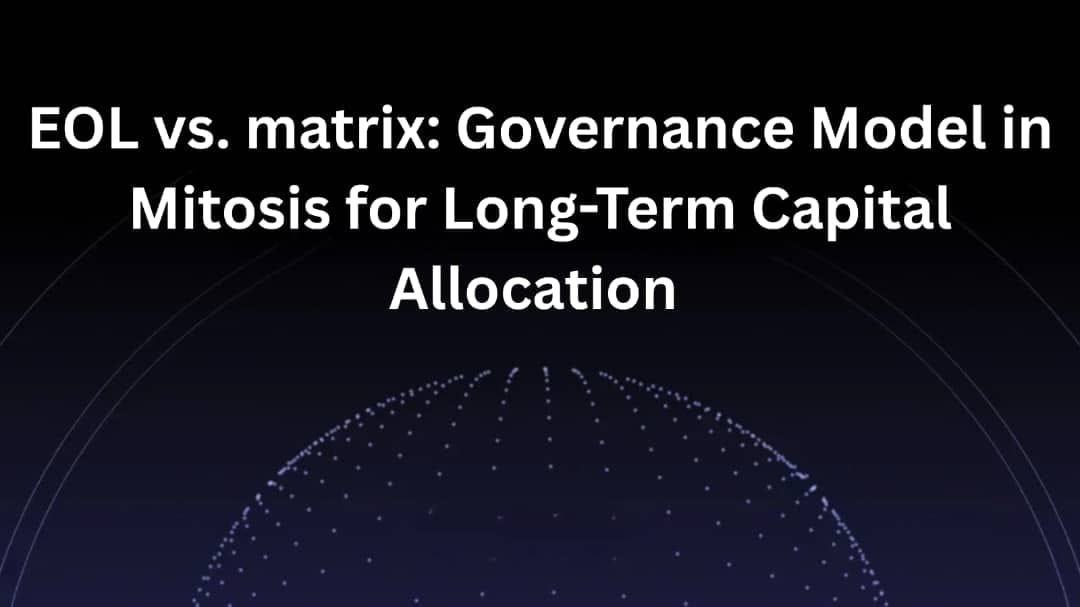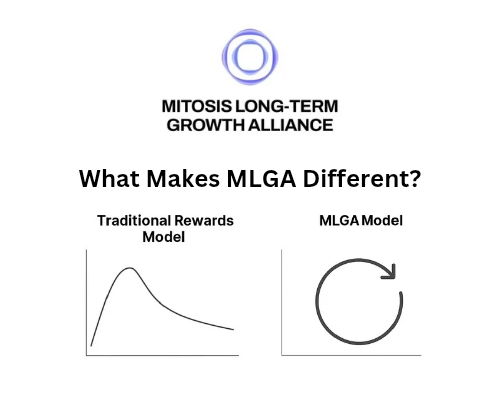EOL vs. Matrix: Governance Models in Mitosis for Long-Term Capital Allocation

Introduction
In the rapidly evolving landscape of decentralized finance (DeFi), effective governance models are crucial for ensuring equitable access to yield and sustainable liquidity management. The Mitosis ecosystem introduces two distinct governance frameworks: Ecosystem-Owned Liquidity (EOL) and Matrix. Each model offers unique approaches to capital allocation, enabling liquidity providers to engage in governance and optimize their returns. This article compares these two governance models, highlighting their features, benefits, and implications for long-term capital allocation.
1. Ecosystem-Owned Liquidity (EOL)
1.1 Overview of EOL
Ecosystem-Owned Liquidity (EOL) is a governance model that emphasizes democratic pooling and community-driven liquidity management. Operating under a decentralized autonomous organization (DAO) framework, EOL allows community members to participate in decision-making processes regarding liquidity allocation strategies. This model fosters transparency, inclusivity, and long-term sustainability.
1.2 Key Features of EOL
- Democratic Pooling: EOL operates on a principle of collective decision-making, where all participants have a voice in governance. Community members can vote on proposals related to liquidity allocation, ensuring that decisions reflect the interests of the broader ecosystem.
- Long-Term Focus: EOL prioritizes sustainable liquidity management by emphasizing long-term strategies over short-term incentives. This focus encourages participants to consider the future of the ecosystem, fostering stability and resilience.
- Accessibility: EOL is designed to be inclusive, allowing anyone to participate by depositing assets into liquidity pools. This accessibility empowers a diverse range of users to engage in governance and benefit from yield opportunities.
- Cross-Chain Compatibility: EOL enables liquidity to be allocated across multiple blockchain networks, enhancing flexibility and scalability. This feature allows users to optimize their capital across various platforms, maximizing returns while minimizing risks.
1.3 Benefits of EOL
- Community Engagement: EOL fosters a sense of ownership among participants, as they have a direct say in governance and liquidity management. This engagement can lead to a more vibrant and active community.
- Stability and Resilience: By focusing on long-term strategies, EOL promotes stability within the ecosystem. This resilience can help mitigate the impact of market volatility and ensure sustainable growth.
- Equitable Yield Access: EOL's democratic approach ensures that all participants have equal access to yield opportunities, promoting fairness and inclusivity in the DeFi space.
2. Matrix
2.1 Overview of Matrix
The Matrix model represents a governance framework that focuses on tactical vault campaigns and automated strategies. Unlike EOL's long-term approach, Matrix is designed to respond quickly to market conditions, providing liquidity providers with flexible exposure and structured commitments.
2.2 Key Features of Matrix
- Tactical Vault Campaigns: Matrix operates through short-term, structured campaigns that allow liquidity providers to engage in specific strategies. These campaigns are designed to capitalize on immediate yield prospects, enabling users to respond quickly to changing market dynamics.
- Automated Strategies: Matrix employs automated mechanisms to allocate liquidity based on predefined criteria. This automation streamlines the process for users, reducing the need for manual intervention and making it easier to manage investments.
- Flexible Exposure: Users can choose how to allocate their liquidity across different campaigns, allowing for tailored investment strategies. This flexibility enables liquidity providers to adapt to market changes and optimize their returns.
- Yield Optimization: Matrix is designed to maximize yield access by curating high-return opportunities across various protocols. This focus on yield optimization ensures that participants can benefit from the best available options in the market.
2.3 Benefits of Matrix
- Efficiency: The automated nature of Matrix allows for quick responses to market changes, enabling liquidity providers to capitalize on short-term opportunities without extensive involvement in governance.
- Targeted Strategies: Matrix's tactical campaigns allow users to focus on specific yield opportunities, providing a more targeted approach to liquidity management.
- Enhanced Yield Access: By curating high-return opportunities, Matrix ensures that liquidity providers can access the best yields available, optimizing their investment strategies.
3. Comparison of EOL and Matrix
1. Governance Structure
- EOL: Operates under a democratic pooling model, fostering collective decision-making and community engagement. Participants have a direct say in governance, promoting transparency and inclusivity.
- Matrix: Focuses on tactical campaigns and automated strategies, prioritizing quick responses to market changes. This model may appeal more to users seeking efficiency and immediate returns without extensive governance involvement.
2. Investment Horizon
- EOL: Emphasizes sustainable, long-term strategies, encouraging participants to think about the future of the ecosystem. This long-term focus promotes stability and resilience.
- Matrix: Concentrates on short-term yield opportunities, allowing liquidity providers to adapt quickly to changing market dynamics. This focus on immediate returns may attract users looking for quick gains.
3. User Engagement
- EOL: Encourages broad participation in governance, making it accessible to all users. This engagement fosters a sense of community and ownership among participants.
- Matrix: While it may appeal to those seeking efficiency, the automated strategies may limit user engagement in governance. Users may prefer to focus on yield optimization rather than governance participation.
4. Yield Access
- EOL: Aims to provide equitable yield access through democratic decision-making, ensuring that all participants can benefit from yield opportunities.
- Matrix: Focuses on maximizing yield access through curated, tactical campaigns, catering to users seeking high-return opportunities.
Conclusion
Ecosystem-Owned Liquidity (EOL) and Matrix represent two distinct governance models within the Mitosis ecosystem, each offering unique advantages for liquidity providers. EOL's focus on democratic pooling and long-term strategies complements Matrix's tactical campaigns and automated yield optimization, creating a diverse landscape for capital allocation in decentralized finance. By understanding the strengths and weaknesses of each model, liquidity providers can make informed decisions about their participation in the Mitosis ecosystem, ultimately contributing to a more equitable and sustainable DeFi landscape.

Comments ()